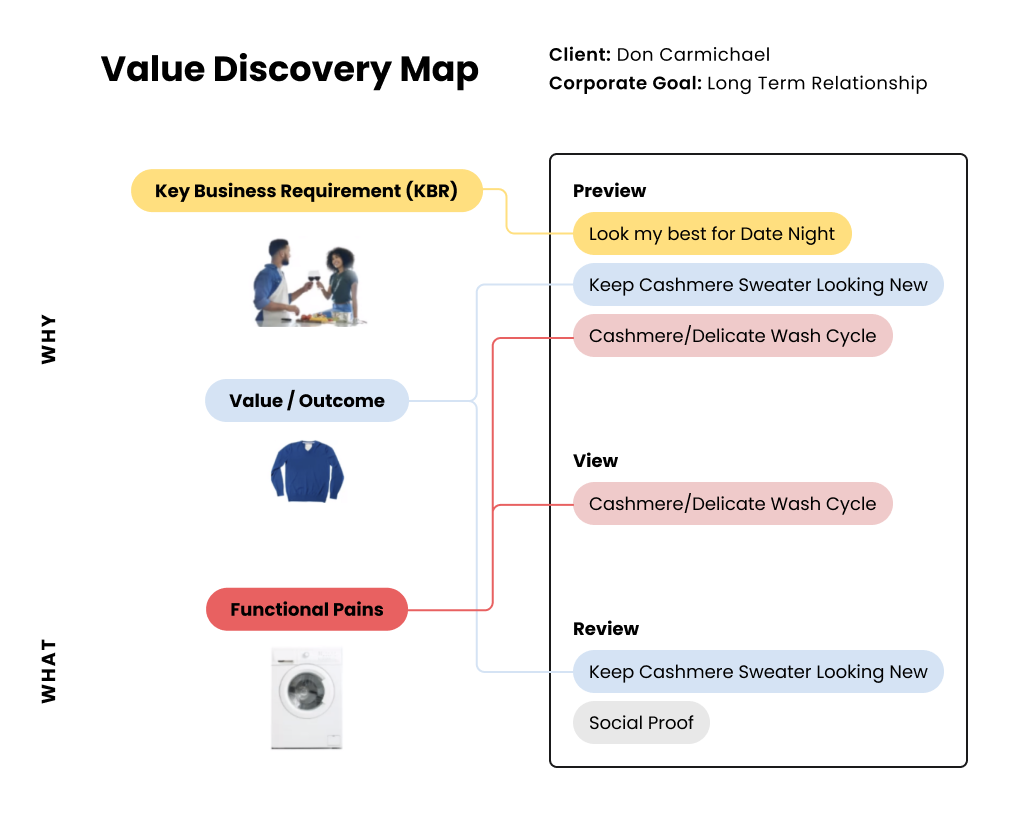In his DEMOFEST 2023 session, Don Carmicheal made a bold statement about how we use live demos, “Live demos don’t close enterprise deals!”
“In the world of buyer enablement, it’s not what they’re going to buy, it’s why they’re going to buy. Value story arcs are one way of plotting discovery and the connections between value propositions and strategic goals. These value story arcs are hugely powerful because you can hand ownership of them to your internal buyer champion, who can use them for selling up and down the buyer’s organization on your behalf.”
According to this solution engineer legend, many organizations are trapped in this old way of closing deals. Their reluctance to change this reliance on live closing demos is, in part, due to a fear of changing how things are done. But with current trends of B2B sales, we have to take the customers’ lead.
Live Isn’t Always Best to Close Enterprise Deals
Live demos were seen as the most effective way to close enterprise deals. However, buyers have evolved to rebel against the traditional method most sellers use since it doesn’t put buyers at the center of the process. Instead, buyers want the process of buying new software to be more similar to how they make purchases in their daily lives.
In order to adapt, presales demos need to focus on three things: risk mitigation, value, and outcomes. Buyers are more likely to be persuaded by a story that illustrates how the product will help them achieve their goals, how it will address their needs and pain points and is supported by evidence.
Don recommends using a value discovery map to create the story. A value discovery map is a visual representation of the buyer’s journey that you use to identify the buyer’s functional pains, value outcomes, key business requirements, and corporate goals.
In his session, Don used himself as an example as a buyer looking to buy a washing machine for his new cashmere sweater.

Once these elements have been identified, you can create a compelling value story arc. This story arc will then help you write a demo script. While this demo can still be delivered live, it still differs from the traditional closing demo because it persuades the customer on the value of the software.
As you’re creating the value story arc, remember that customers aren’t waiting for sales engineers to start their research. Modern buyers are much further along in their process before they reach out, so make sure your content and timing align with where the buyer is.
The Value Discovery Map and Demos
Using value discovery maps to create your demo script allows you to make your interactions more effective. The value discovery map can separate out the “what” from the “why” of your solution. For this kind of demo, the “what” refers to the features and functions and the “why” refers to the value and outcomes that the product or service can deliver.
Demos based on value discover maps:
- Understand the buyer’s needs and pain points. This is the most important step in creating an effective demo. Once you understand what the buyer is looking for, you can tailor the demo to their specific needs.
- Focus on the features and functions that will deliver the most value. Don’t try to cram everything into your demo. Instead, focus on the features and functions that will deliver the most value to the buyer.
- Are relevant and engaging. The demo should be relevant to the buyer’s needs and pain points, but shouldn’t be dry. Crafting a story should make it engaging enough to keep their attention.
- Emphasize the benefits that the buyer will experience. The demo should highlight the outcomes the buyer can expect from employing your solution. These will be especially persuasive if you include data to back up your claims.
The Importance of Creating Self-Service Content
While live demos are important, today’s buyers want to be able to see content on their own time.
Employing demo automation software allows you to create content that buyers can access on their own. This not only allows buyers to access information about your product without waiting for presales resources to become available, but provides you with many benefits as well.
With the help of automated demo software, you can provide your customers guided product tours, interactive video demos, and customizable demo experiences on demand.
When creating on-demand product demonstrations:
- Make sure your content is clear and concise. Buyers should be able to understand your content without having to read through a lot of jargon or technical terms.
- Use visuals to illustrate your points. Images, charts, and infographics can help to make your content more engaging and easier to understand.
- Make your content accessible. Your content should be available on multiple platforms, such as your website, social media, and your blog.
- Promote your content. Let people know that you have created self-service content by sharing it on social media, in your email marketing campaigns, and on your website.
In this chat chain, we discussed the importance of understanding the buyer’s journey and creating self-service content that will help buyers to learn more about your product or service and to self-qualify before they even reach out to you. We also discussed the importance of using value discovery maps to create demos that are more effective and that will help you to close more deals.
It’s not whether the closing demo is in-person or an interactive demo, but if we demonstrate our understanding of the buyer’s buyer’s needs and pain points. Value discovery maps are useful for creating demos as they help you focus your ideas, making your demos more effective. When you understand the buyer’s needs and pain points, you can create content and demos that will help you to connect with buyers, educate them about your product or service, and close more deals.
